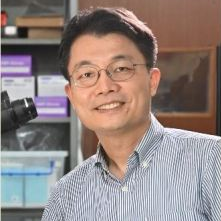Smart Nanogenerators
A special issue of Nanomaterials (ISSN 2079-4991).
Deadline for manuscript submissions: closed (30 November 2018) | Viewed by 30412
Special Issue Editors
Interests: smart nanogenerators; self-powered nanosensors and nanosystems; porous nanomaterials for electrochemical applications; biomolecule detection; functional nanomaterials with strong antibacterial activities
Special Issues, Collections and Topics in MDPI journals
Interests: hydrogen production; piezoelectric materials; piezocatalysis; nanogenerator; 2D materials
Interests: piezotronics and nanogenerators; thermoelectric devices based on nanowires, sensors, lithion ion battery, semiconductor nanomaterials and nanodevices
Interests: piezoelectric/triboelectric nanogenerators; triboelectric mechanisms and piezoelectric (photo)electronics; other applied fundamentals; functional devices; integrated systems research
Special Issues, Collections and Topics in MDPI journals
Special Issue Information
Dear Colleagues,
Renewable energy, as an alternative solution to fossil fuels, has triggered increasing research efforts from both industry and academia in recent decades. The attractive characteristics of renewable energy include its reduced carbon emissions, secure long-term energy supply, and less dependence on fossil fuels, all of which are mandatory for the sustainable development of the environment. While sustainable energy is urgently demanded, nanogenerators is one of the most promising candidates to fulfill the aforementioned needs, and thus has been developed in varied prototypes to harvest mechanical and thermal energy in the environment, such as piezoelectric nanogenerator proposed by Prof. Zhong Lin Wang in 2006, which converts tiny-scale mechanical energy into electricity. Since 2012, the development of triboelectric nanogenerator (also by Prof. Zhong Lin Wang) has demonstrated itself as an efficient power source to directly drive microelectronics or charge capacitor/battery for a self-powered sensing system. In addition to the benefits of cost-effectiveness, easy fabrication, and robust capability, nanogenerators are “smart” in their versatility to function beyond energy harvesting and work as active/self-powered nanosensors with no external input power, which are mini-sized and eco-friendly to eliminate the use of environmentally harmful materials in battery. The development of these nanogenerators has pushed its feasible applications in a wide range of fields. This Special Issue of Nanomaterials will attempt to cover the recent achievements in the fields of nanogenerators and self-powered nanosensors.
Dr. Zong-Hong Lin
Prof. Dr. Jyh-Ming Wu
Prof. Dr. Chuan-Pu Liu
Prof. Dr. Zhong Lin Wang
Guest Editors
Manuscript Submission Information
Manuscripts should be submitted online at www.mdpi.com by registering and logging in to this website. Once you are registered, click here to go to the submission form. Manuscripts can be submitted until the deadline. All submissions that pass pre-check are peer-reviewed. Accepted papers will be published continuously in the journal (as soon as accepted) and will be listed together on the special issue website. Research articles, review articles as well as short communications are invited. For planned papers, a title and short abstract (about 100 words) can be sent to the Editorial Office for announcement on this website.
Submitted manuscripts should not have been published previously, nor be under consideration for publication elsewhere (except conference proceedings papers). All manuscripts are thoroughly refereed through a single-blind peer-review process. A guide for authors and other relevant information for submission of manuscripts is available on the Instructions for Authors page. Nanomaterials is an international peer-reviewed open access semimonthly journal published by MDPI.
Please visit the Instructions for Authors page before submitting a manuscript. The Article Processing Charge (APC) for publication in this open access journal is 2900 CHF (Swiss Francs). Submitted papers should be well formatted and use good English. Authors may use MDPI's English editing service prior to publication or during author revisions.
Keywords
- Nanogenerator
- self-powered nanosensor
- energy harvesting
- contact electrification
- piezoelectric nanomaterials
- piezotronics
- pyroelectric effect
- thermoelectricity
- wearable electronics









